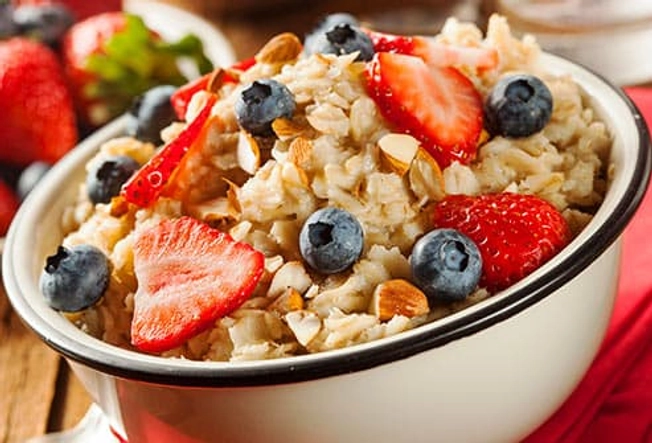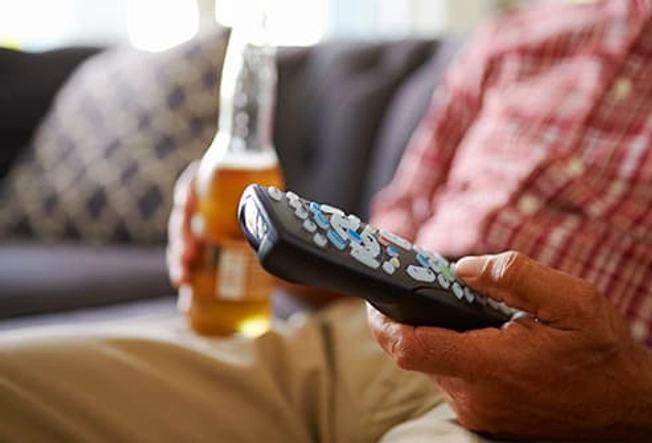Essential amino acids are organic compounds that your body needs to function. You can get them from certain foods.
Essential Amino Acids
This video breaks down the benefits and food sources of how to add the essential amino acids to your diet.
0 seconds of 54 secondsVolume 0%
Amino acids, often referred to as the building blocks of proteins, are compounds that play many critical roles in your body.
You need them for vital processes such as building proteins, hormones, and neurotransmitters.
Amino acids are concentrated in protein-rich foods such as meat, fish, and soybeans.
Some people also take certain amino acids in supplement form as a natural way to boost athletic performance or improve mood.
They’re categorized as essential, conditionally essential, or nonessential depending on several factors.
In this article you’ll find all the basics about essential amino acids, including how they function, food sources rich in essential amino acids, and the potential benefits of taking a supplement.
What are essential amino acids?
Amino acids are organic compounds composed mainly of nitrogen, carbon, hydrogen, and oxygen.
Your body needs 20 different amino acids to grow and function properly. While all 20 of these are important for your health, only 9 are classified as essential (1Trusted Source).
These are histidine, isoleucine, leucine, lysine, methionine, phenylalanine, threonine, tryptophan, and valine.
Although your body can make nonessential amino acids, it cannot make essential amino acids, so you have to get them from your diet.
The best sources of essential amino acids are animal proteins such as meat, eggs, and poultry. However, some plant foods, such as the soy products edamame and tofu, contain all nine essential amino acids. This means they are “complete” protein sources (2Trusted Source, 3Trusted Source).
After you eat protein, your body breaks it down into amino acids and then uses them for various processes, such as building muscle and regulating immune function (1Trusted Source).
Conditionally essential amino acids
Several nonessential amino acids are classified as conditionally essential.
These are essential only under specific circumstances, such as during illness, pregnancy, infancy, or trauma.
For example, arginine is considered nonessential, but your body can’t make as much as you need when you’re healing from a serious injury or fighting certain diseases, such as cancer (4Trusted Source).
That’s why, in certain situations, people may take arginine supplements to meet their bodies’ needs.
Additionally, certain amino acids, including glycine and arginine, are considered conditionally essential during pregnancy because a pregnant person needs more of these amino acids to support their own health and the health of the fetus (5Trusted Source, 6Trusted Source).
SUMMARY
Your body can’t produce the nine essential amino acids, so you need to get them from your diet. Conditionally essential amino acids are nonessential amino acids that become essential in certain circumstances, such as illness or pregnancy.
How many essential amino acids are there?
There are nine essential amino acids, each of which performs a number of important jobs in your body:
- Phenylalanine: Your body turns this amino acid into the neurotransmitters tyrosine, dopamine, epinephrine, and norepinephrine. It plays an integral role in the structure and function of proteins and enzymes and the production of other amino acids (7).
- Valine: This is one of three branched-chain amino acids (BCAAs) on this list. That means it has a chain branching off from one side of its molecular structure. Valine helps stimulate muscle growth and regeneration and is involved in energy production (8).
- Threonine: This is a principal part of structural proteins such as collagen and elastin, which are important components of your skin and connective tissue. It also plays a role in fat metabolism and immune function (9).
- Tryptophan: Often associated with drowsiness, tryptophan is a precursor to serotonin, a neurotransmitter that regulates your appetite, sleep, and mood (10).
- Methionine: This amino acid plays an important role in metabolism and detoxification. It’s also necessary for tissue growth and the absorption of zinc and selenium, minerals that are vital to your health (11).
- Leucine: Like valine, leucine is a BCAA that is critical for protein synthesis and muscle repair. It also helps regulate blood sugar levels, stimulates wound healing, and produces growth hormones (12).
- Isoleucine: The last of the three BCAAs, isoleucine is involved in muscle metabolism and is heavily concentrated in muscle tissue. It’s also important for immune function, hemoglobin production, and energy regulation (13).
- Lysine: Lysine plays major roles in protein synthesis, calcium absorption, and the production of hormones and enzymes. It’s also important for energy production, immune function, and collagen and elastin production (14).
- Histidine: Your body uses this amino acid to produce histamine, a neurotransmitter that is vital to immune response, digestion, sexual function, and sleep-wake cycles. It’s critical for maintaining the myelin sheath, a protective barrier that surrounds your nerve cells (15).
As you can see, essential amino acids are at the core of many vital processes.
Although amino acids are most recognized for their role in muscle development and repair, your body depends on them for so much more.
That’s why essential amino acid deficiencies can negatively affect your entire body, including your nervous, reproductive, immune, and digestive systems.
People can have different amino acid needs based on stage of life, chronic illness, and acute health issues such as an infection or a surgery.
However, most people get all the amino acids they need through their diet.
SUMMARY
All nine essential amino acids perform important roles in your body. They’re involved in many processes, including tissue growth, energy production, immune function, and nutrient absorption.
Health benefits of taking essential amino acid supplements
While essential amino acids can be found in a wide array of foods, taking concentrated doses in supplement form has been linked to several health benefits.
May help with mood
Tryptophan is necessary for the production of serotonin, a chemical that acts as a neurotransmitter in your body.
Serotonin is an essential regulator of mood, sleep, and behaviors.
While low serotonin levels have been linked to depressed mood and sleep disturbances, several studies have shown that taking tryptophan supplements may help reduce symptoms of depression and boost mood (16Trusted Source, 17Trusted Source, 18Trusted Source, 19Trusted Source).
A review that included 11 high quality studies found that taking 0.14–3 grams (g) of tryptophan per day could help decrease anxiety and increase positive mood in generally healthy people (18Trusted Source).
May improve exercise performance and recovery
Many people take valine, leucine, and isoleucine, the three essential BCAAs, to alleviate fatigue, improve athletic performance, and stimulate muscle recovery after exercise.
In a small 2017 study, resistance-trained athletes took BCAAs at a dose of 0.039 g per pound (lb) — 0.087 g per kilogram (kg) — of body weight, with a 2:1:1 ratio of leucine, isoleucine, and valine.
Those who took the BCAAs showed improved performance and muscle recovery and decreased muscle soreness compared with those who took a placebo (20Trusted Source).
A review of eight studies found that taking BCAAs was superior to rest for promoting muscle recovery and reducing soreness after exhaustive exercise (21Trusted Source).
What’s more, another review that included nine studies found that taking BCAAs helped reduce muscle damage and soreness after resistance exercise in active men (22Trusted Source).
Taking BCAAs has also been shown to reduce the rating of perceived exertion — how intensely a person feels they are working during exercise — in people performing high intensity exercise (23Trusted Source).
May be helpful for wound healing and surgery
Taking amino acid supplements may be helpful for people who are healing after surgery (24Trusted Source, 25Trusted Source).
A study in 243 people with pelvis or long bone fractures found that those who took conditionally essential amino acids for 2 weeks after surgery had lower rates of death and medical complications than those who received standard nutrition (25Trusted Source).
A review of 20 studies looking at the effects of taking BCAAs in people with cancer undergoing surgery found that those who took BCAAs around the time of surgery had reduced postoperative complications from infections and fluid accumulation in the abdomen (26Trusted Source).
What’s more, according to results from one study, taking essential amino acid supplements may help reduce loss of muscle volume in older adults recovering from knee replacement surgery (27Trusted Source).
SUMMARY
Taking certain essential amino acids in supplement form may help improve mood, support exercise performance and recovery, and help improve health outcomes after surgery.
Food sources and recommended intake
Because your body cannot produce essential amino acids, it’s important to get them through your diet.
Many foods are rich in essential amino acids, making it easy to meet your daily needs (28Trusted Source).
Here are the daily required intakes for the essential amino acids, according to the World Health Organization. These are for adults per 2.2 lb (1 kg) of body weight (29):
- Histidine: 10 milligrams (mg)
- Isoleucine: 20 mg
- Leucine: 39 mg
- Lysine: 30 mg
- Methionine: 10.4 mg
- Phenylalanine combined with the nonessential amino acid tyrosine: 25 mg
- Threonine: 15 mg
- Tryptophan: 4 mg
- Valine: 26 mg
To find out how much you should consume per day, you can multiply the numbers given above by your weight in kilograms. For example, a person who weighs 60 kg (132 lb) should consume 1,200 mg (1.2 g) of isoleucine per day.
Meeting these requirements is very easy with most diets, so there’s usually no need to track your intake of individual amino acids.
For example, one 174-g piece of braised chicken breast provides 55.9 g of complete protein, easily meeting or exceeding the needs listed above (30Trusted Source).
Food sources
Foods that contain all nine essential amino acids are referred to as complete proteins.
The following foods are complete protein sources:
- meat
- seafood
- poultry
- eggs
- dairy products
Soy and pea protein are plant-based complete protein sources (2Trusted Source, 3Trusted Source, 31Trusted Source).
Other plant-based sources of protein, such as beans, nuts, and certain grains, are considered incomplete proteins because they lack one or more of the essential amino acids.
However, if you’re following a plant-based diet, you can still ensure proper intake of all nine essential amino acids by eating a variety of plant proteins each day.
For example, choosing a variety of plant-based proteins, such as beans, nuts, seeds, whole grains, and vegetables, can ensure that you meet your essential amino acid needs, even if you choose to exclude animal products from your diet.
SUMMARY
Many animal and plant foods, such as meat, eggs, quinoa, and soy, contain all nine essential amino acids and are considered complete proteins.
How to supplement with essential amino acids
Most people get enough essential amino acids through their diet.
However, there are some benefits to taking essential amino acid supplements. For example, athletes often take them to enhance exercise performance and recovery.
One review that included 10 high quality studies found that doses of BCAAs of up to 115.6 mg per lb (255 mg per kg) per day could help reduce delayed onset muscle soreness in trained individuals after exercise (32Trusted Source).
Additionally, people may choose to take individual amino acids, rather than blends, to support certain aspects of health, such as mood.
A review that included 11 high quality studies found that taking 0.14–3 g of tryptophan per day could help improve mood in healthy people (18Trusted Source).
As you can see, dosing varies depending on the type of amino acid you’re taking and what your goal is.
Amino acid supplements are considered safe for most people. However, they’re usually not necessary if you’re getting enough protein in your diet.
Nonetheless, amino acid supplements may offer certain benefits for specific groups of people.
If you’re interested in taking essential amino acid supplements, speak with a healthcare professional who is knowledgeable about dietary supplements, such as your doctor or a registered dietitian.
They can recommend specific dosing and tell you how best to take your supplement, depending on your health goals. Additionally, they can help you choose a supplement from a reputable brand that offers products tested by third-party organizations.
SUMMARY
Dosing of amino acid supplements depends on the specific amino acid and your reason for using it. If you’re interested in taking essential amino acid supplements, consult a qualified healthcare professional.
The bottom line
There are nine essential amino acids, which you must get through your diet — histidine, isoleucine, leucine, lysine, methionine, phenylalanine, threonine, tryptophan, and valine.
They’re vital for functions throughout your body, including protein synthesis, tissue repair, and nutrient absorption.
Some may also help prevent muscle loss, support recovery after surgery, and improve mood, sleep, and athletic performance.
These vital compounds are found in many animal- and plant-based foods, so most people can meet their daily needs by eating a healthy, balanced diet. You can also take essential amino acid supplements if needed.
 By Ernie Mundell HealthDay Reporter
By Ernie Mundell HealthDay Reporter















